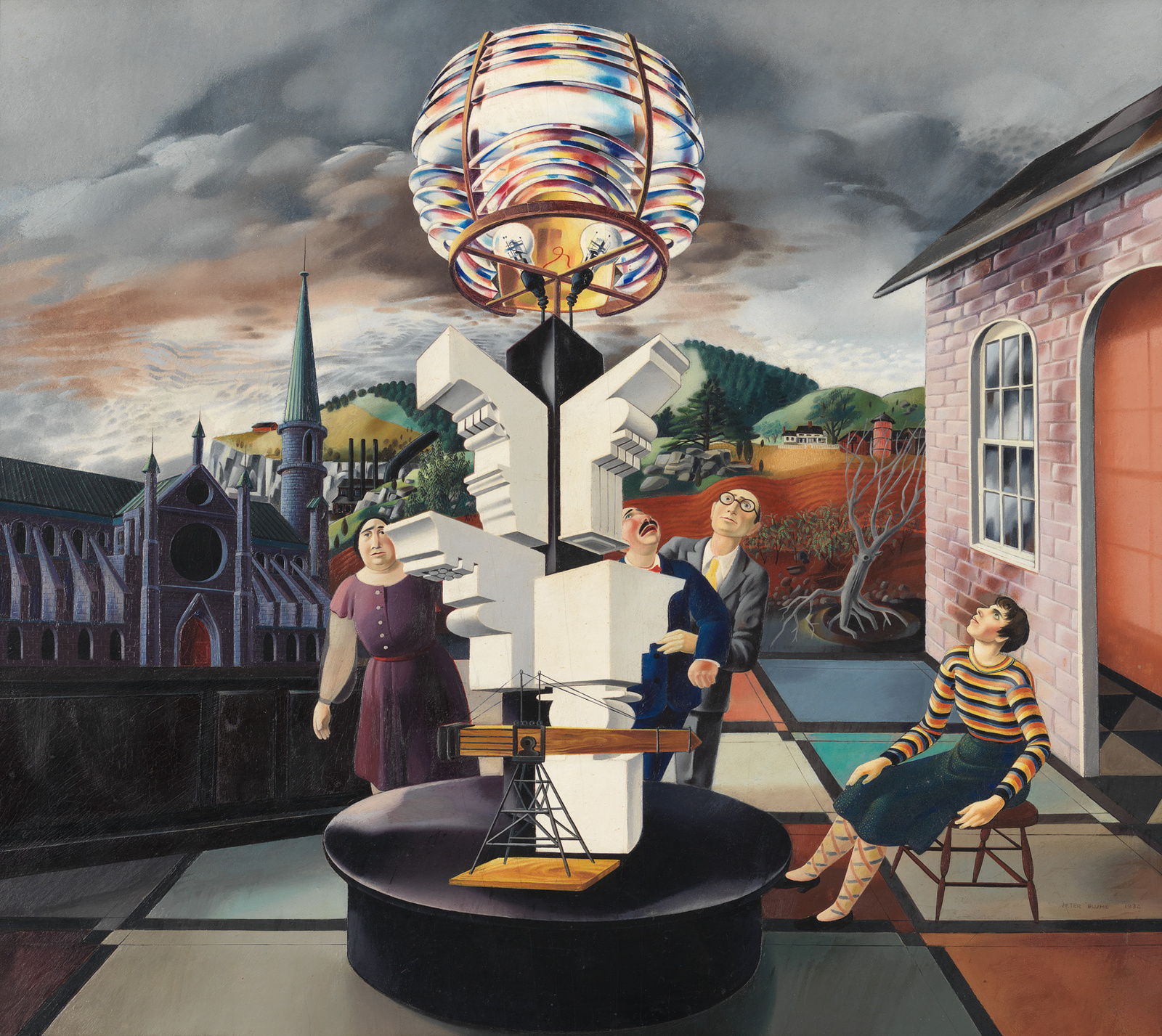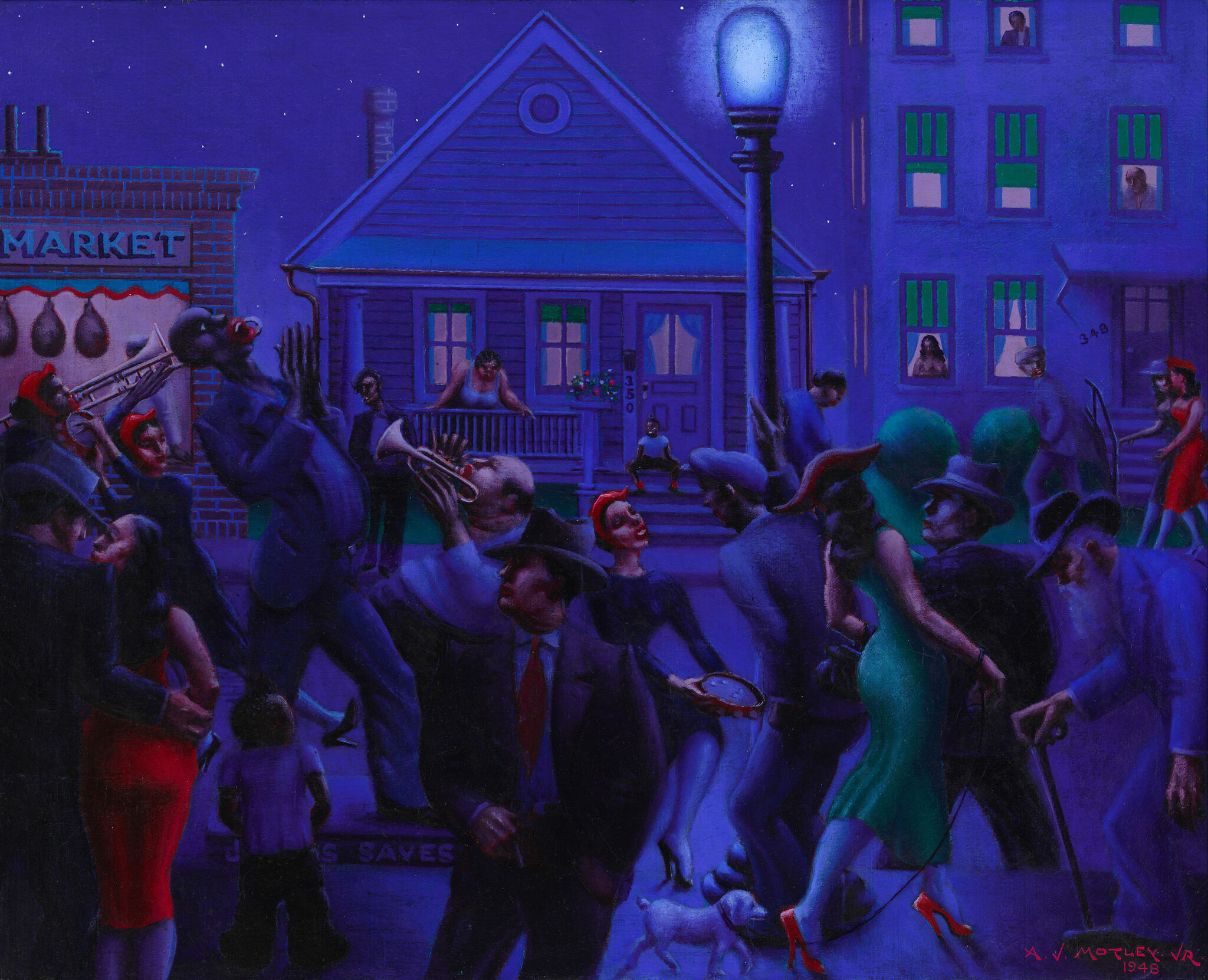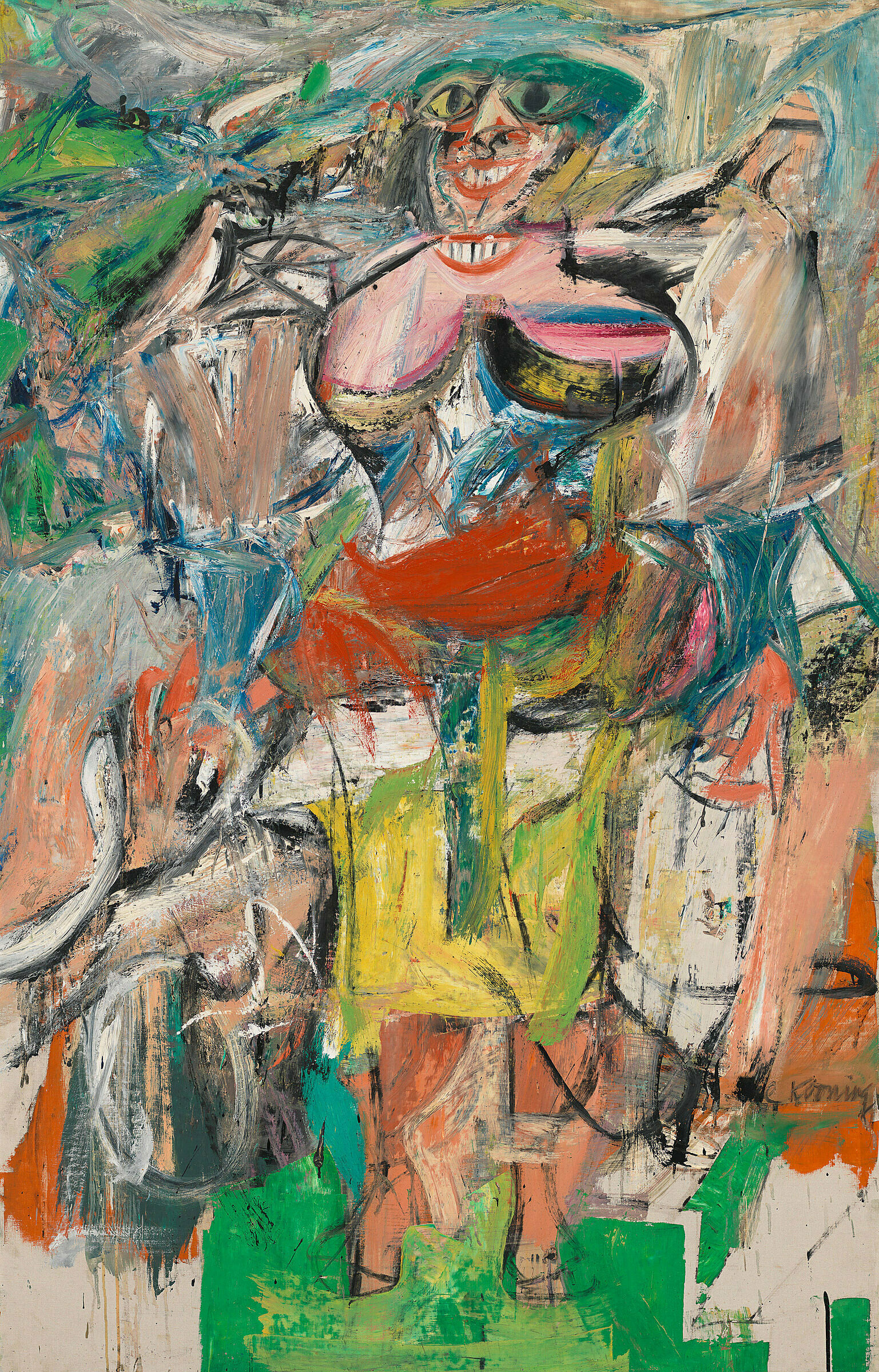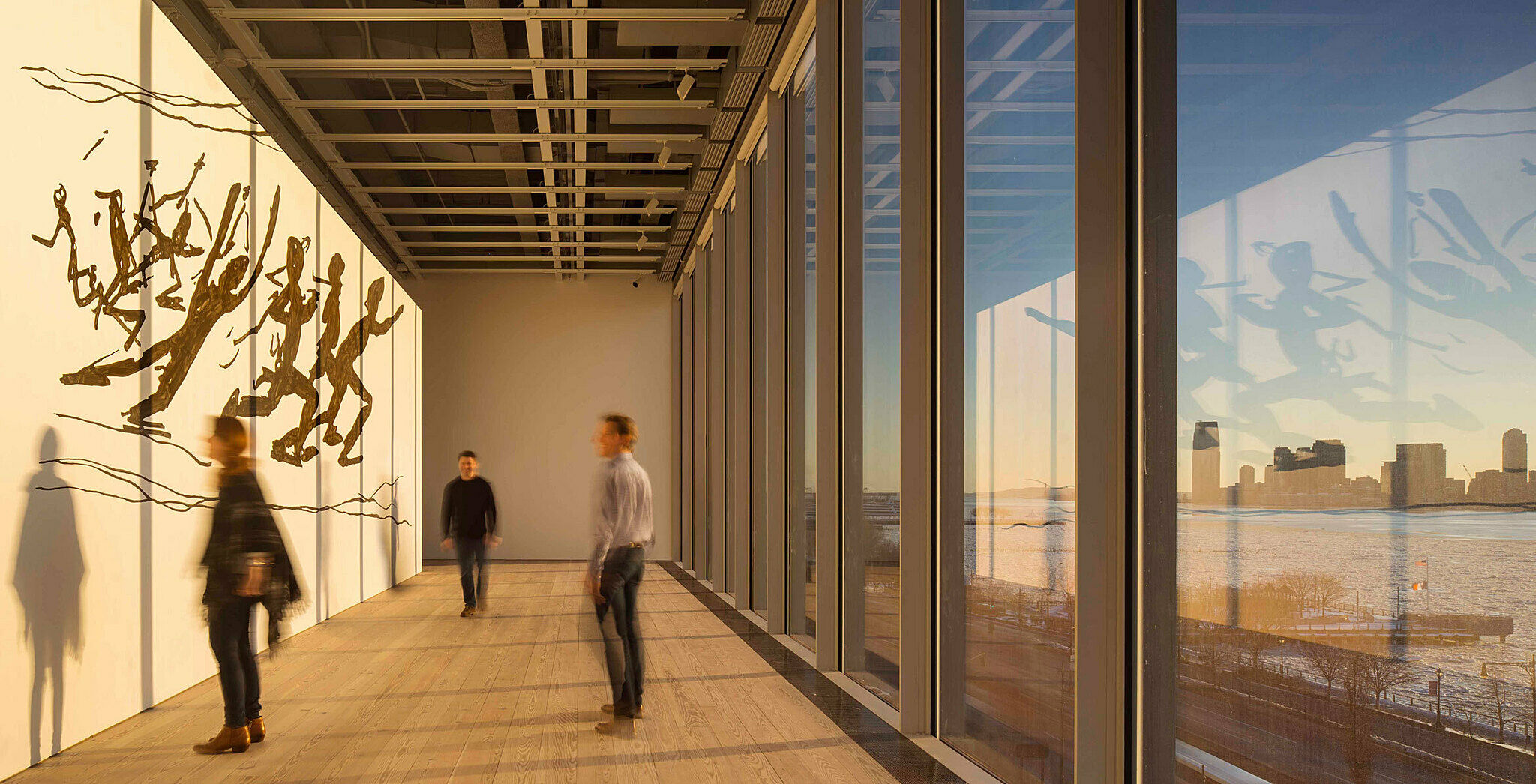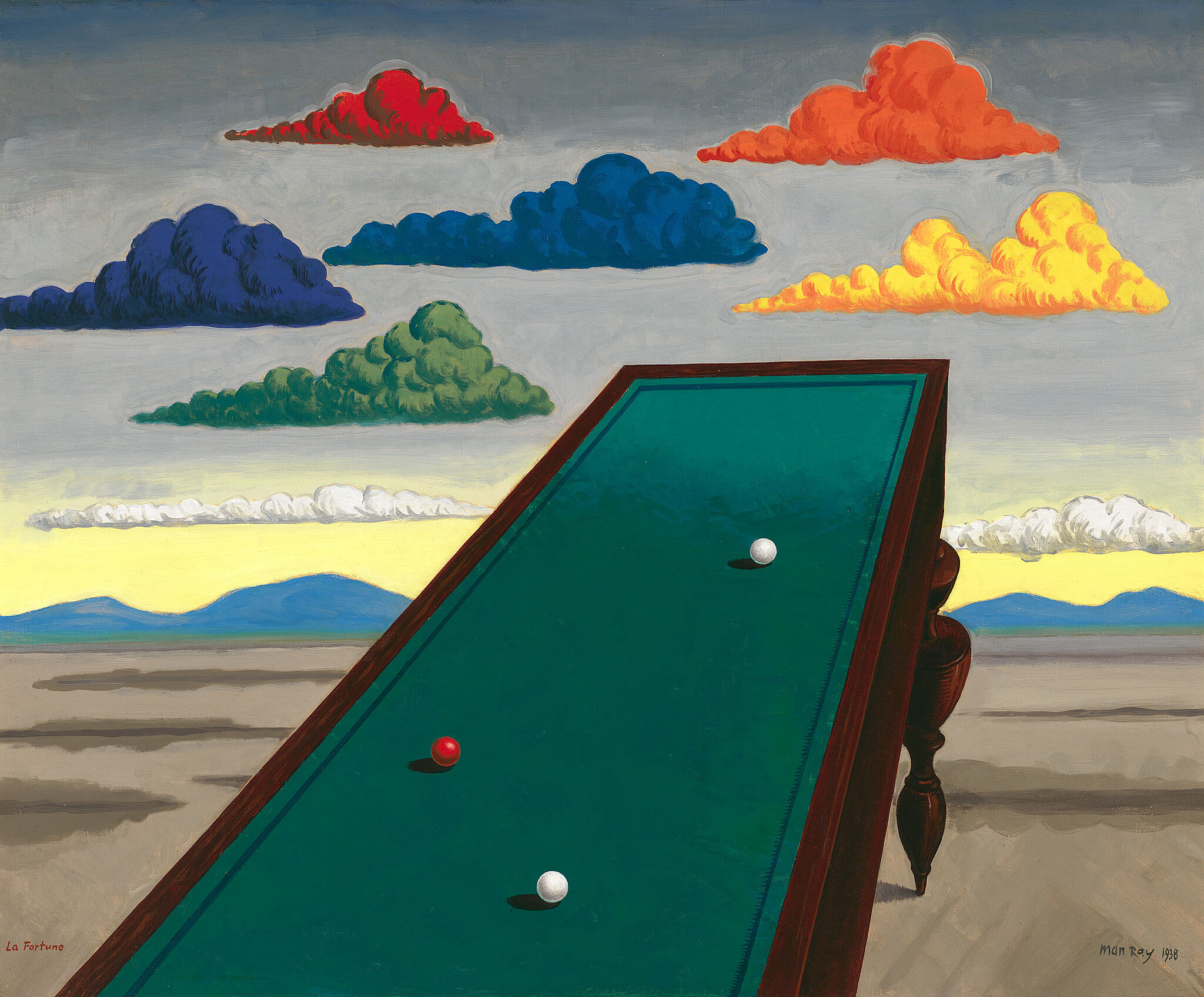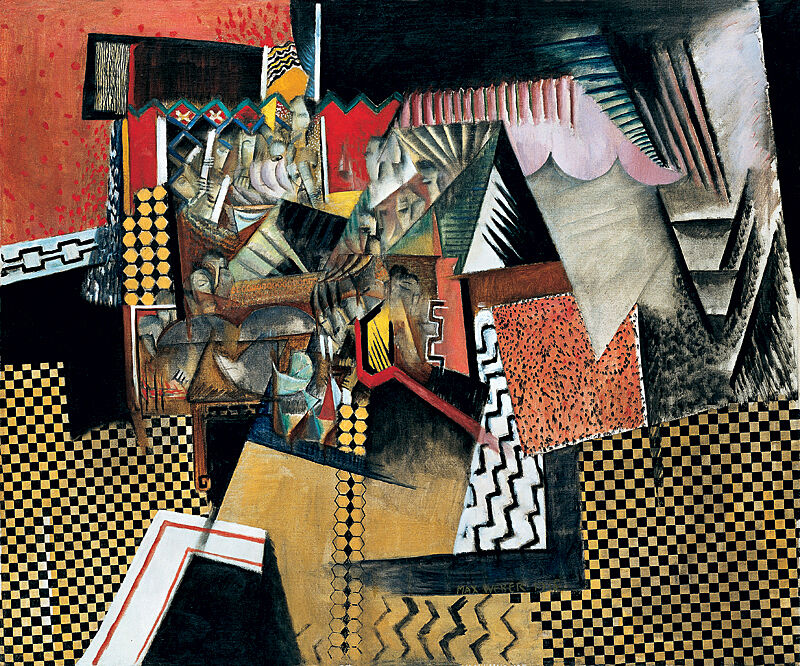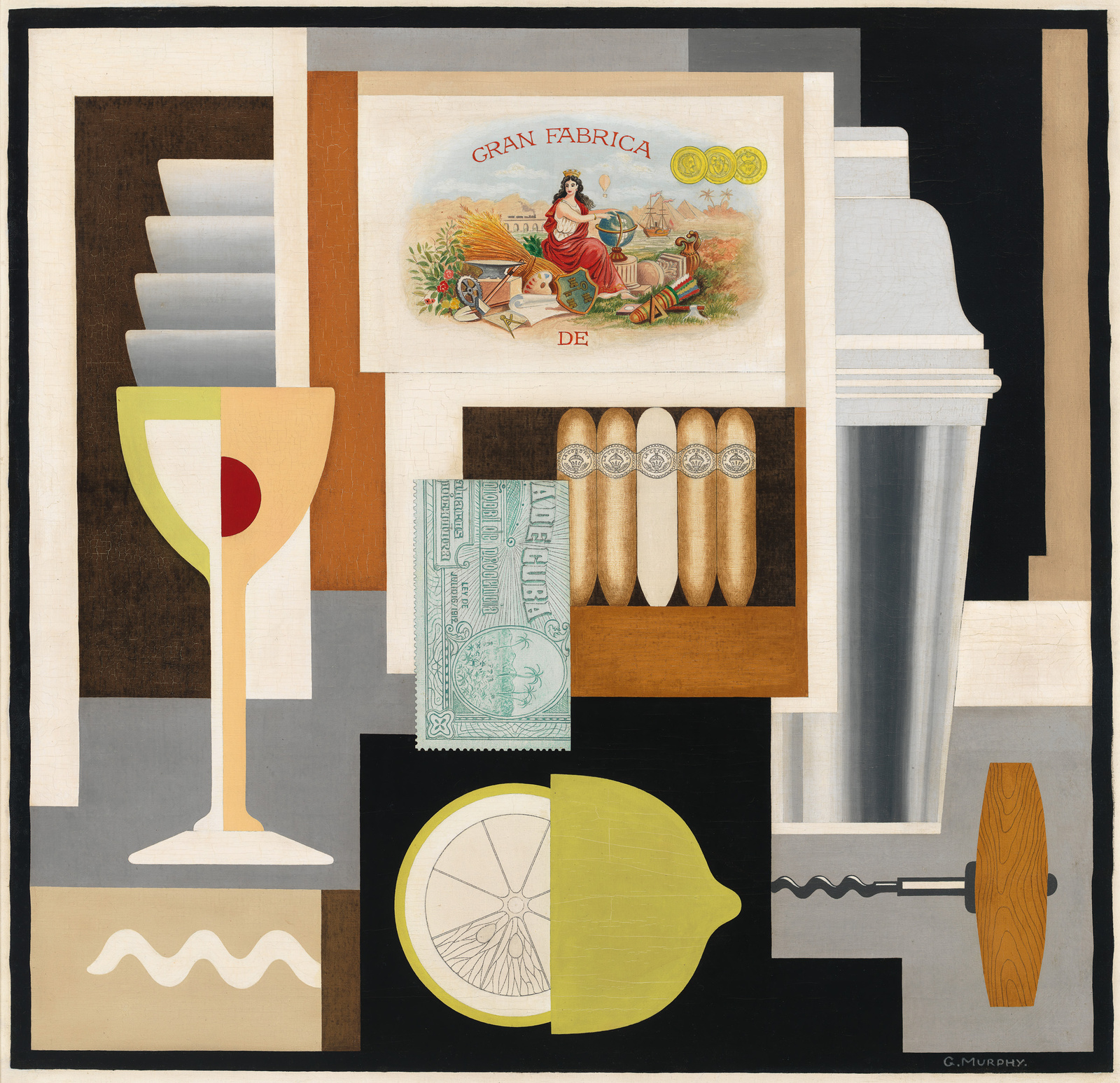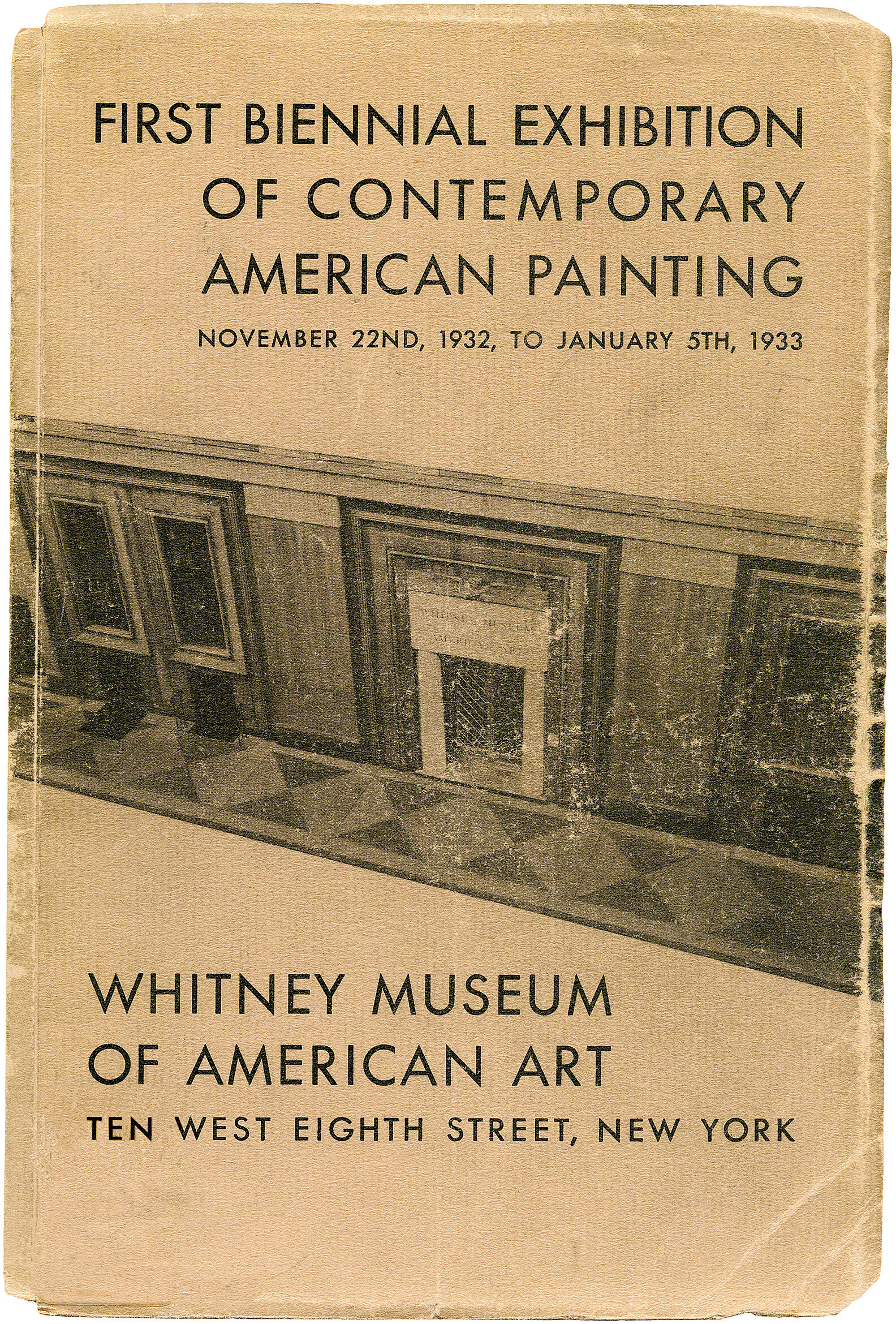On view
Floor 7
Date
1932
Classification
Paintings
Medium
Oil on composition board
Dimensions
Overall: 16 5/8 × 18 7/8in. (42.2 × 47.9 cm) Frame (metal, silver): 18 1/8 × 20 3/16 × 1 5/16in. (46 × 51.3 × 3.3 cm)
Accession number
33.5
Credit line
Whitney Museum of American Art, New York; purchase
Rights and reproductions
© Estate of Peter Blume / Licensed by VAGA at Artists Rights Society (ARS), New York
API
artworks/1907
Peter Blume’s Light of the World is a disquieting, dreamlike amalgamation of details drawn from history as well as the artist’s own everyday life. Set against a landscape that resembles the northwestern Connecticut town of Sherman, where Blume and his wife settled in 1930, the scene’s foreground includes a cathedral loosely inspired by Paris’s Notre-Dame and a group of plaster cornices based on ones that the artist saw in an educational display at the Metropolitan Museum of Art in the winter of 1932. Also adapted from this display are the squared-off floor pattern, and on the circular base, the mechanism used to erect Cleopatra’s Needle, the obelisk in Central Park near the Metropolitan Museum. At the scene’s center, the four figures appear fearfully attentive to the large, multicolored glass light from which the painting receives its title—a form based on the Highland Lighthouse on Cape Cod, the first sight seen by many European immigrants arriving in America. Yet, despite these references, the overall composition offers an unresolved visual riddle about urban and rural values and human docility. Indeed, Blume identified the mustachioed figure as a ventriloquist’s dummy, the artist’s symbol for the voiceless and impotent American worker.
